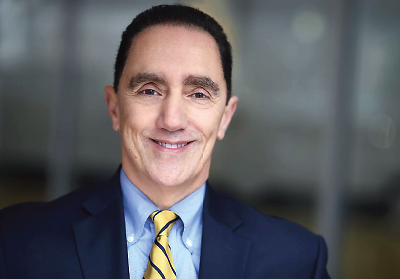Group Unveils Strategy for Reducing Suicide Rate 20 Percent by 2025
Abstract
Educating the firearms community and health care professionals about suicide prevention could help drive down the nation’s suicide rate, says the American Foundation for Suicide Prevention.
Every year, an estimated 42,000 people in the United States die by suicide. The American Foundation for Suicide Prevention (AFSP) believes that investing in three critical areas could reduce the U.S. suicide rate by 20 percent by 2025.

The American Foundation for Suicide Prevention wants to take the most promising interventions, strategies, and programs and apply them widely to save the most lives, said AFSP CEO Robert Gebbia.
“Our modeling shows we could save thousands of lives each year if we focus on the best strategies and interventions, and apply them widely,” said AFSP CEO Robert Gebbia in an August teleconference. The current age-adjusted rate for suicide is 12.93 per 100,000, according to the AFSP website. A 20 percent reduction would cut that rate to 10.34 per 100,000, amounting to about 8,600 lives saved per year by 2025.
The approach planned for “Project 2025” will be dynamic and flexible, subject to modification as results appear, Gebbia said.
Half of all people who die by suicide use firearms, according to Gebbia, so AFSP will ally with the National Shooting Sports Foundation, a firearms trade group, to work with gun retailers, shooting ranges, and gun owners. The partnership will develop educational programs and materials to inform the firearms community about suicide prevention. Screening this population may help identify those who are “suffering in silence” before they harm themselves, Gebbia said.
“If 50 percent of gun buyers are exposed to educational messages about prevention and there is a 20 percent effect, we could save 9,500 lives by 2025,” he added.
A second preventive strategy aims to identify people at risk of suicide who visit large health care systems but remain undetected.
“We know that 50 percent of people who die by suicide have been seen recently in primary care settings, although usually not for psychiatric reasons,” Kelly Posner, Ph.D., an AFSP board member and an associate professor of psychiatry at Columbia University, told Psychiatric News. “So we know we need to screen and assess these people and get them into the right care.”
AFSP will provide training and information to health care systems to help health care workers detect patients at risk of suicide, provide short-term interventions, and connect at-risk patients with better long-term follow-up care. Such procedures would likely save another 9,200 lives, said Gebbia.
A third target of Project 2025’s agenda is emergency departments.
“About 39 percent of people who die by suicide have been seen previously in an emergency department but presented with nonpsychiatric, nonsuicidal symptoms,” he said. “We could do a much better job of screening and short-term interventions, as well as better transition and follow-up care.”
Such programs could save another 1,100 lives, he believes. AFSP sees itself as a catalyst and will work with other collaborators like professional associations, accrediting bodies, and others.
The organization has already made grants to researchers at the University of Pennsylvania, Columbia University, and the University of Massachusetts to study a safety planning intervention that covers “warning sign identification, limiting access to lethal means, and personalized strategies to deescalate a suicide crisis,” according to AFSP.
Setting a goal to reduce suicide rates by 20 percent within 10 years may seem like an overly ambitious goal, but it may be what is required to attack this significant public health crisis, said Posner.
“Everything we’ve done so far has been based on individual risk factors,” she said. “Now we need more powerful ways to identify patterns by being aggressive in our thinking and combining modern analytic tools and the scientific data we have collected.” ■
More about the American Foundation for Suicide Prevention’s Project 2025 can be accessed here.



